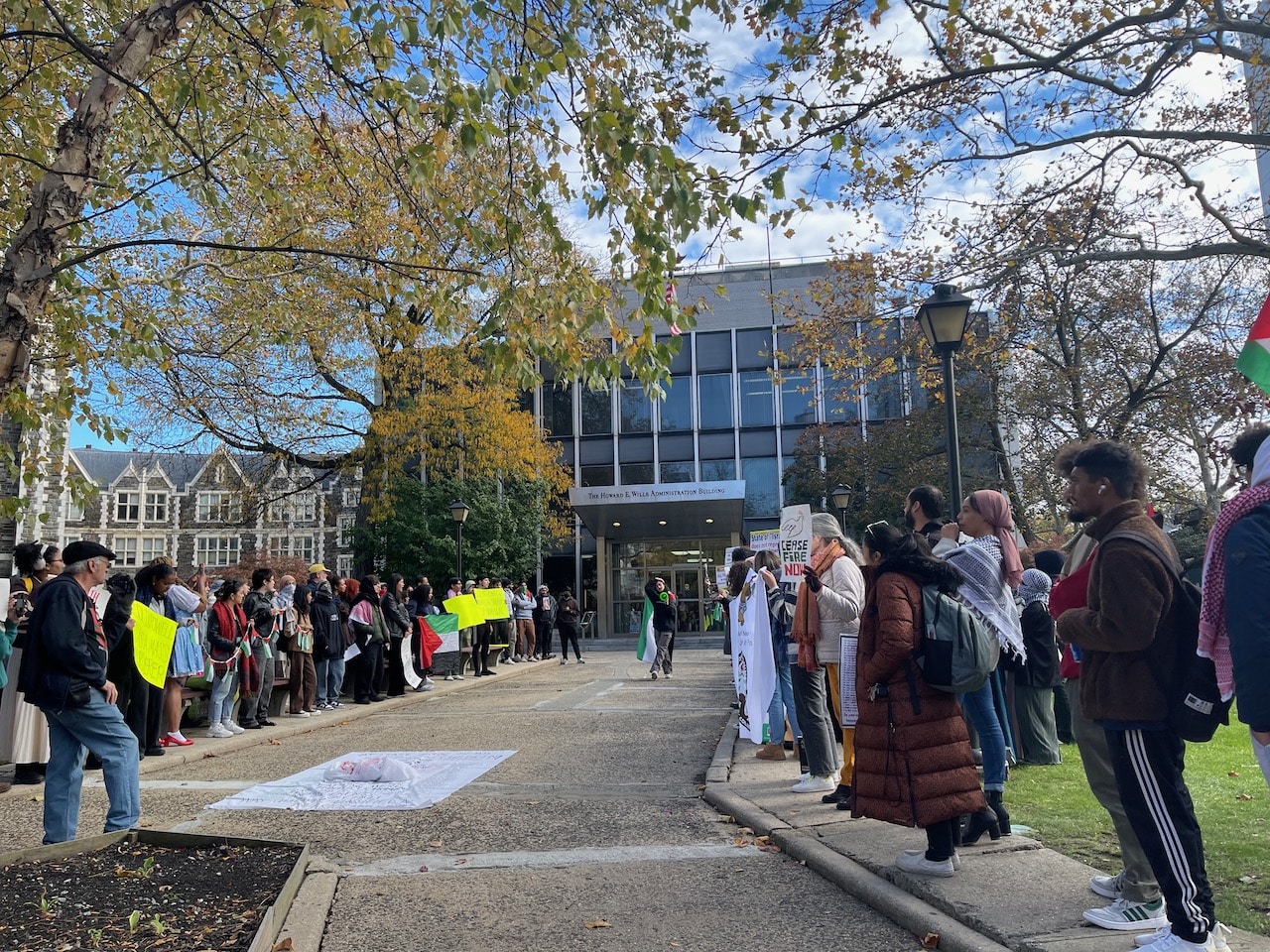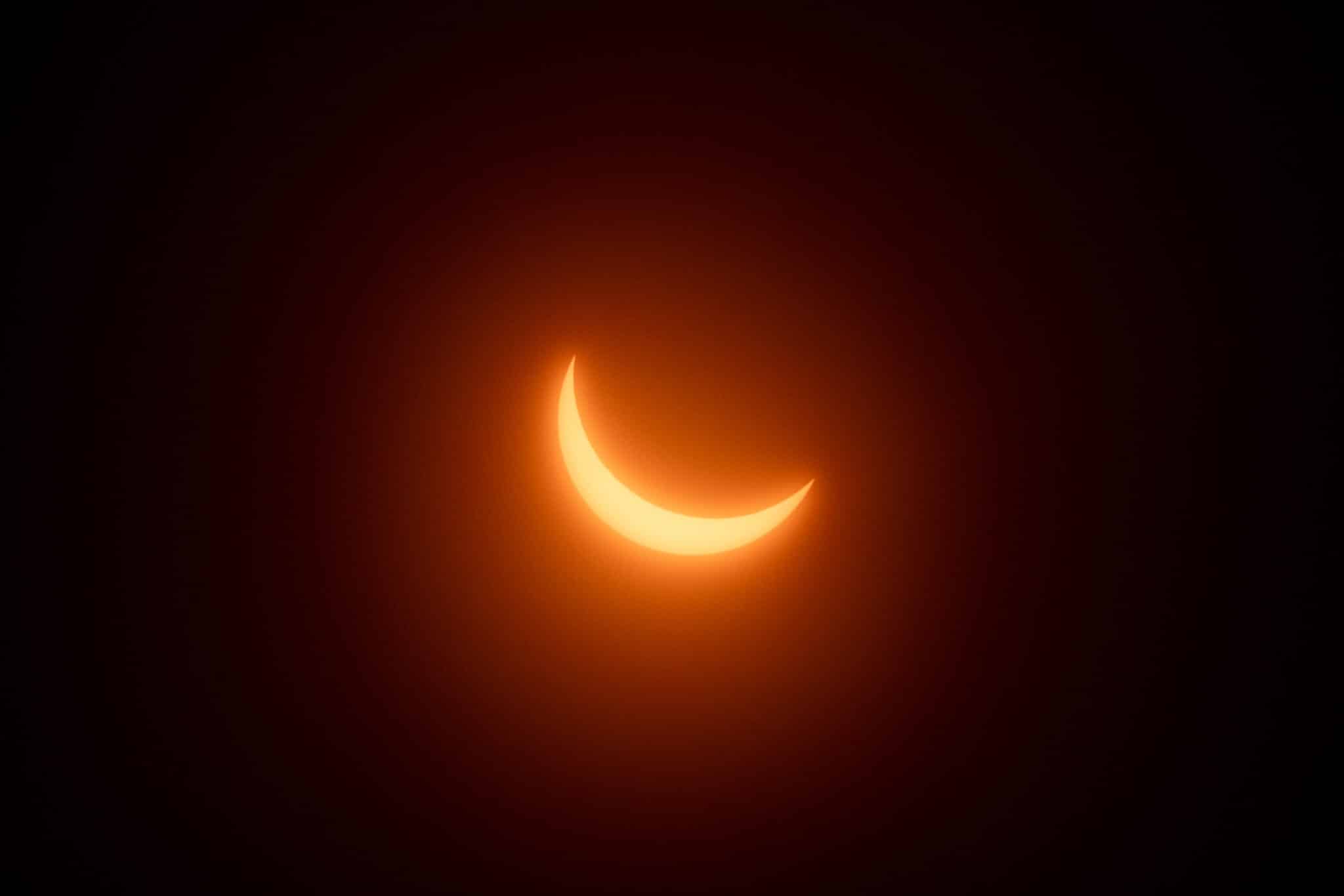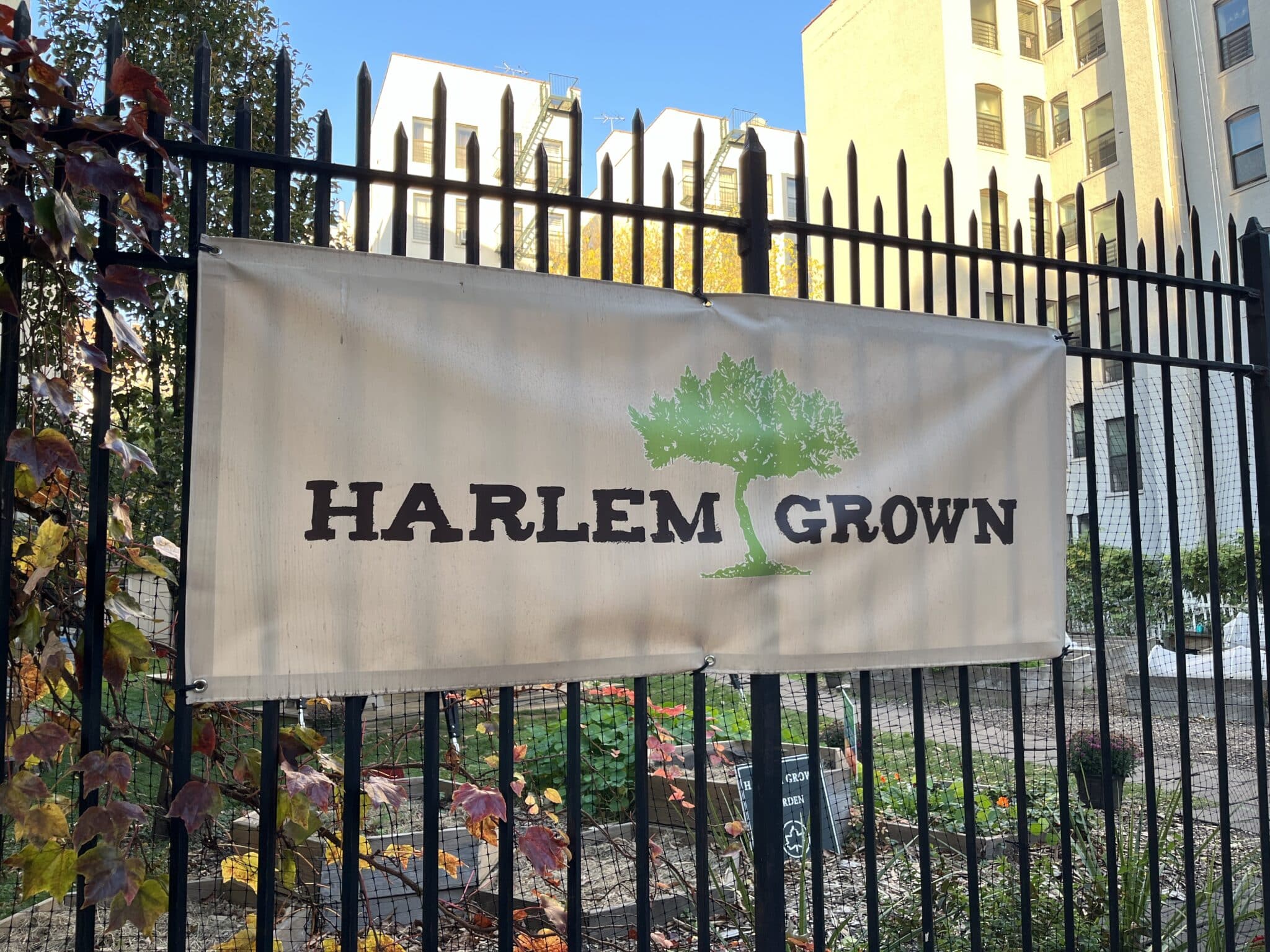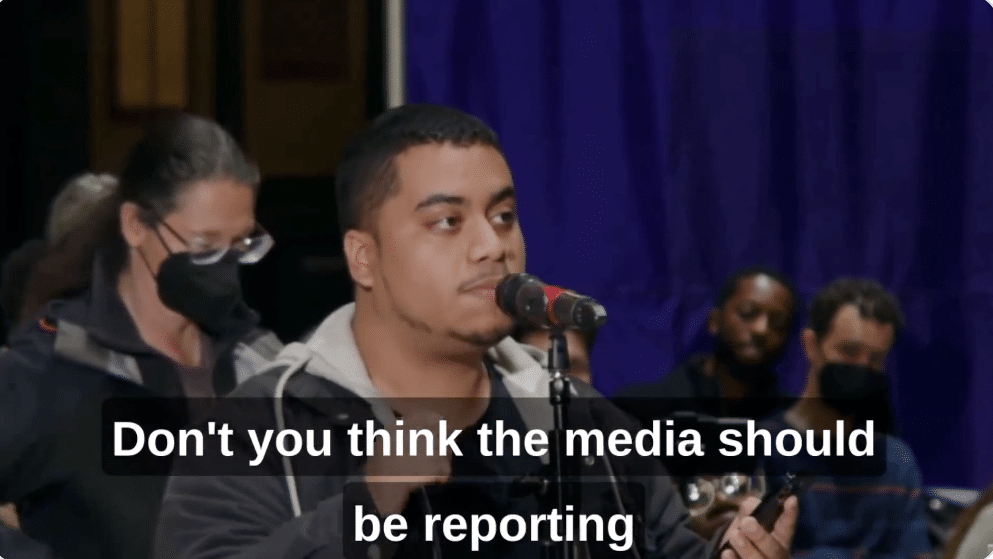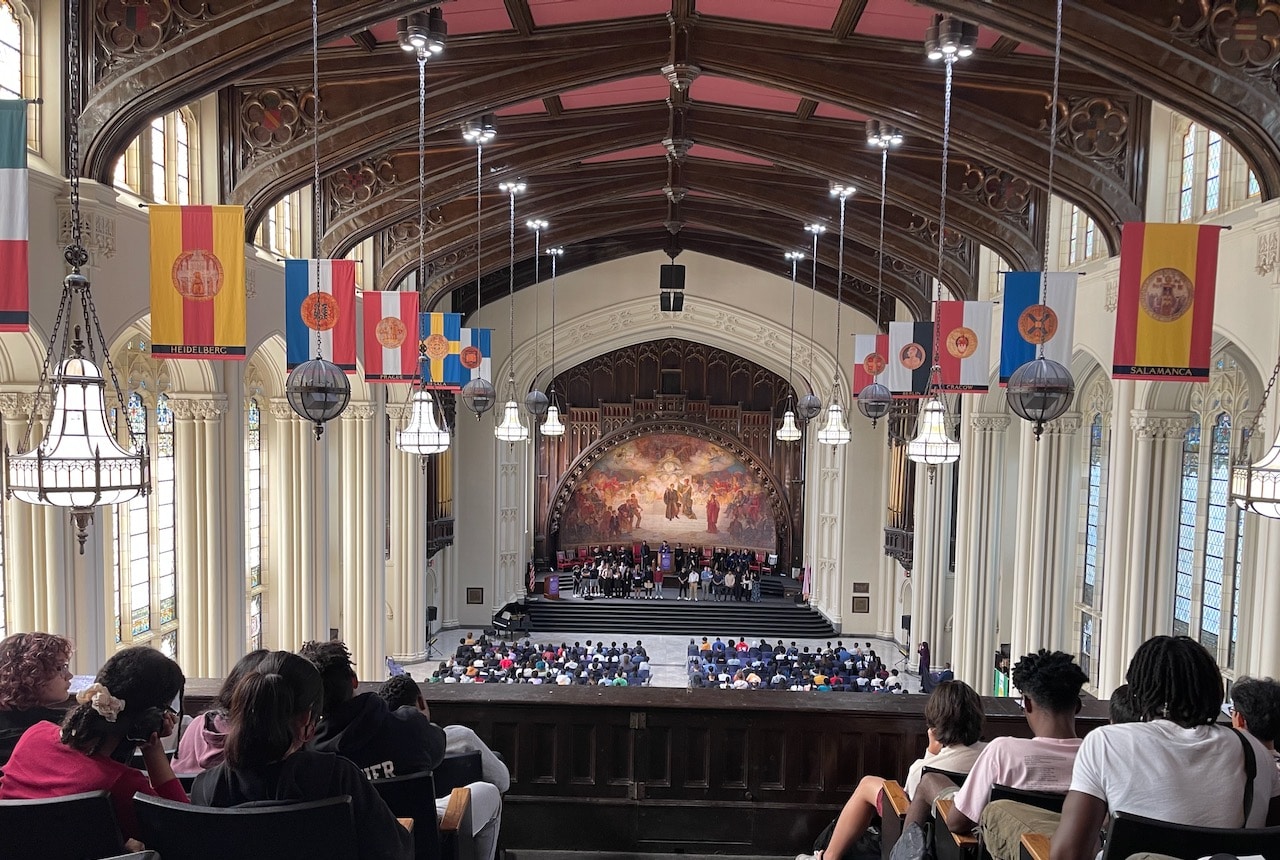HARLEM – Students on the campus of The City College of New York (CCNY) have strong opinions about the October 7 Hamas attack on Israel, the response and now the war between Israel and Hamas.
They talked about their feelings about Palestinian rights, the divide between Israel and Gaza and Palestinians in the West Bank. Some students on campus quickly came out to support the Palestinians and found justification for the killing of 1200 civilians and the kidnapping of more than 200 people.
Tahmida Hasan objects to the classification by the U.S. and other countries of Hamas as a terrorist organization. “Hamas is not a terrorist organization, she said. “It is a defense organization. Without them, Palestine has no defense.” A student who asked us not to use her name agreed. She said, “Hamas is literally Palestine’s only form of resistance” and asked, “Who would have fought back for the rights for Palestinians?”
But Jewish students who are members of the City College Chabad Congregation focus on Hamas’s action. “Hamas does not have Palestinians’ best interest at heart and the crimes they have committed to people are not the acts of a resistance group, but a terrorist group,” Benyamin Abramov said. He continued, “They don’t believe in the wellbeing of Palestine. Their primary goal is to get rid of Israel.”
The Jewish students point to the surprise attack on Israeli towns and a music festival as justification for the retaliation. “The attack was inhumane, brutal, and animalistic,” said Benjamin Kalmanowitz. His friend Ben Mizrachi was among those killed when Hamas gunmen surrounded people at the music festival. He stated, “I was shocked and devastated to hear the news of his passing, he was always such a happy and kind person. We would often talk about music together, so to hear the news of him passing at a festival that was about love was heart-wrenching.”
Kalmanowitz said the Hamas attack and its missiles launched at Israel gives Israel the right to defend itself. Gabrielle Friedman, a member of the City College Chabad congregation, said, “Israel is warranted a response and the taking of 200 hostages justifies a retaliation. They can’t sit by and not do anything. This is not a one-time occurrence from Hamas.”
But the intensity of the Israel strikes that reportedly killed more than 11,000 people, left hospitals without electricity, water, and oxygen in its attempt to destroy Hamas make students feel uneasy. Syeda Ahmed condemned the retaliation. She pointed out that many of those injured and killed in Gaza are children. “Children are most of the population in Gaza and the excuse that they are killing the terrorists as justification for the constant airstrikes is sick.”
Yehuda Pollack said he felt “something has to be done” but “what’s being done is a lot.”
The gruesome images on TV and social media of dead bodies in Gaza streets, children suffering, families holding dead relatives and babies in hospitals make people feel helpless. Some students on campus remain hopeful that Palestinians and Israelis can achieve a resolution that allows people to live in peace.
Benyamin Abramov said, “Using this anger to justify our causes, causes more separation. We need to acknowledge our history and come to terms with it.” He talked about his “dream” solution where “both Israel and Palestine have a joint government.” His fellow Chabad member, Benjamin Kalmanowitz, has a slightly different idea. He says there is a need for “Palestine to recognize Israel and Israel to recognize Palestine, respect amongst each other.”
Others think that the history of occupation is important and should not be brushed aside. Syeda Ahmed wants to see a free Palestinian state. “A peaceful solution is nice to think about, but Palestine has not known peace for decades.” She wants Palestinians to have full control of the West Bank and Gaza. “They get back their homes back and all the illegal settlers give up the stolen property,” she said.
The divide between these two contrasting sides provides a lot of conflicting ideas from the students. It reflects the division within the world around the issue and shows a resolution will be hard to find.
Tags: Benjamin Kalmanowitz Benyamin Abramov City College Chabad Congregraton City College of New York student reaction to Israel Hamas conflict Gabrielle Friedman Hamas Israel Syeda Ahmed Tahmida Hasan Yehuda Pollack
